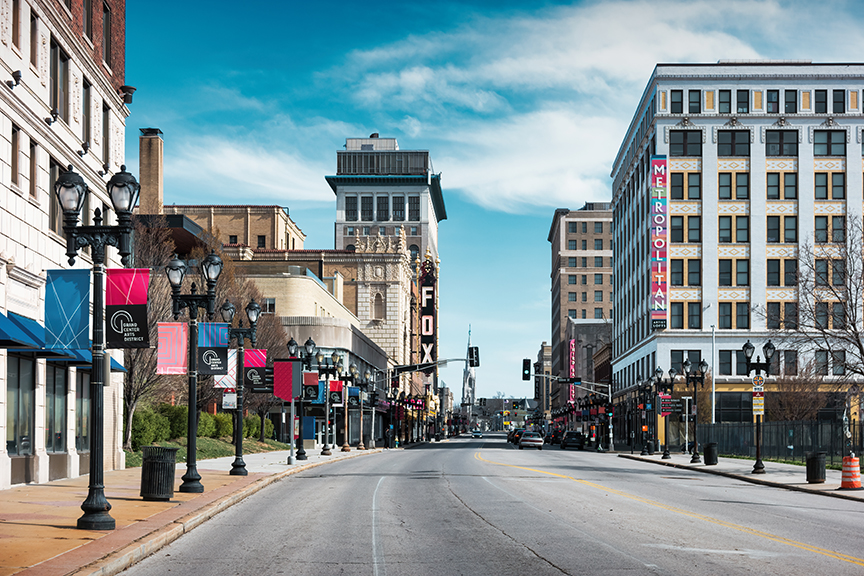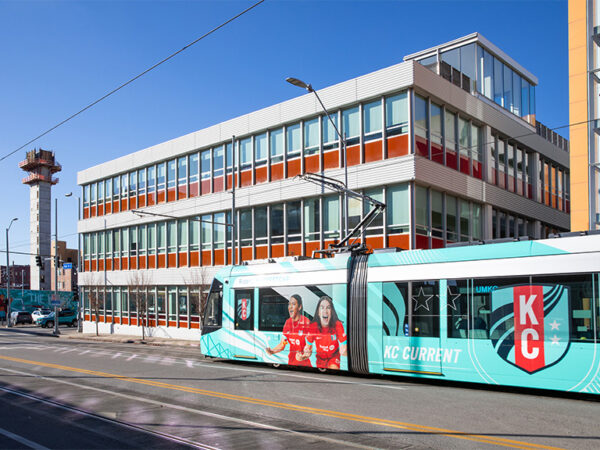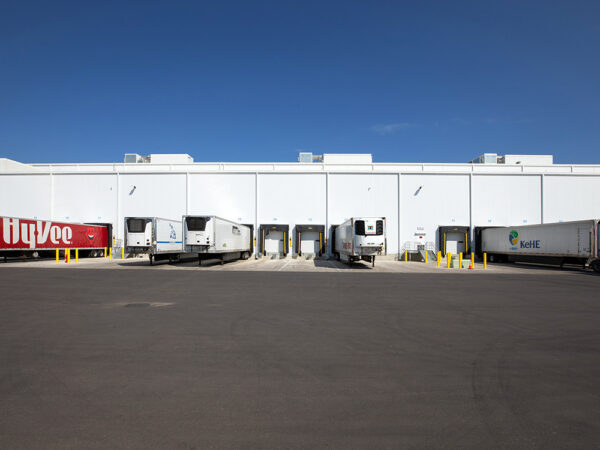Newmark Zimmer’s St. Louis market reports provide a comprehensive overview of current real estate conditions by sector and submarket. Newmark Zimmer is constantly monitoring market indicators, tracking and analyzing supply and demand drivers, cyclical patterns and industry trends. The following quarterly research data examines the multifaceted St. Louis commercial real estate market.
The St. Louis industrial net absorption in the second quarter of 2025 totaled negative 880,985 SF, bringing the past four quarters’ total to 3.7 MSF. This marks the reversal of four consecutive quarters of positive absorption, as tenants capitalized on favorable conditions. The construction pipeline currently stands at 3.7 MSF, with 69% consisting of build-to-suit (BTS) projects. Speculative construction is expected to remain limited in 2025. Vacancy increased 30 basis points to 4.5% in 2Q25 but has decreased 80 bps year over year, driven by positive net absorption from various mid- and large-sized deals in North County, Metro East and St. Charles County submarkets. This stable vacancy rate supports rental rate growth fundamentals and is likely to encourage developers to break ground on select projects during the next four quarters.
The St. Louis office market tightened during the quarter with 33,245 SF of net absorption, bringing the four-quarter total to 393,671 SF. This marks six out of the past nine quarters with positive absorption, as tenants continue to capitalize on favorable conditions. The West County and Downtown submarkets registered 341,630 SF and 130,484 SF of net absorption, respectively, over the past year. The non-owner-occupied construction pipeline has remained inactive since the third quarter of 2022, with just 41,000 SF currently under construction. Vacancy declined 10 basis points to 13.0% during the quarter and is expected to remain stable in 2025 as the market recalibrates. Year-over-year, asking rental rates dropped by $0.26 to $22.62/SF.
The St. Louis retail market faced headwinds in the second quarter of 2025 as consumer sentiment dipped significantly, part of a national trend that saw declines in 45 of 47 U.S. metro areas. Although net absorption remained positive, tariff-driven uncertainty weighed on leasing activity, particularly in discretionary retail categories. Regional tenants have become more cautious, lengthening deal timelines and demanding additional landlord concessions. Retail landlords in St. Louis are navigating a more restrained climate. Construction and operating costs continue to climb, and tenants are requesting shorter lease terms or increased flexibility to manage potential slowdowns.
The pace of investment activity in the St. Louis market slowed during the past four quarters, with sales volume totaling $2.1 billion, a decrease of 33.4% compared with the prior five-year average. As a leading second-tier market, the St. Louis Metropolitan area ranked seventh out of the largest 13 Midwest markets in total sales volume during the past 12 months, with multifamily and industrial assets combining for 69.8% of the Metro’s activity. Capitalization rates increased by 34 basis points compared with the past 12 months, registering 7.6% in the second quarter of Net absorption across the industrial, office, and retail sectors totaled 4.9 million SF over the past four quarters, an increase of 139.5% compared with the preceding year. The multifamily sector realized 1,288 units of net absorption during the past four quarters, a decrease of 50.4% over a similar period a year ago. Vacancy for industrial properties increased 30 bps to 4.5%, as rental rates grew $0.06/SF to $5.93/SF during the quarter.
For a more detailed view of the industrial, office, retail and investment commercial real estate markets, please visit the research section of Newmark Zimmer’s website. Additionally, national reports and market insights are available online through Newmark.



